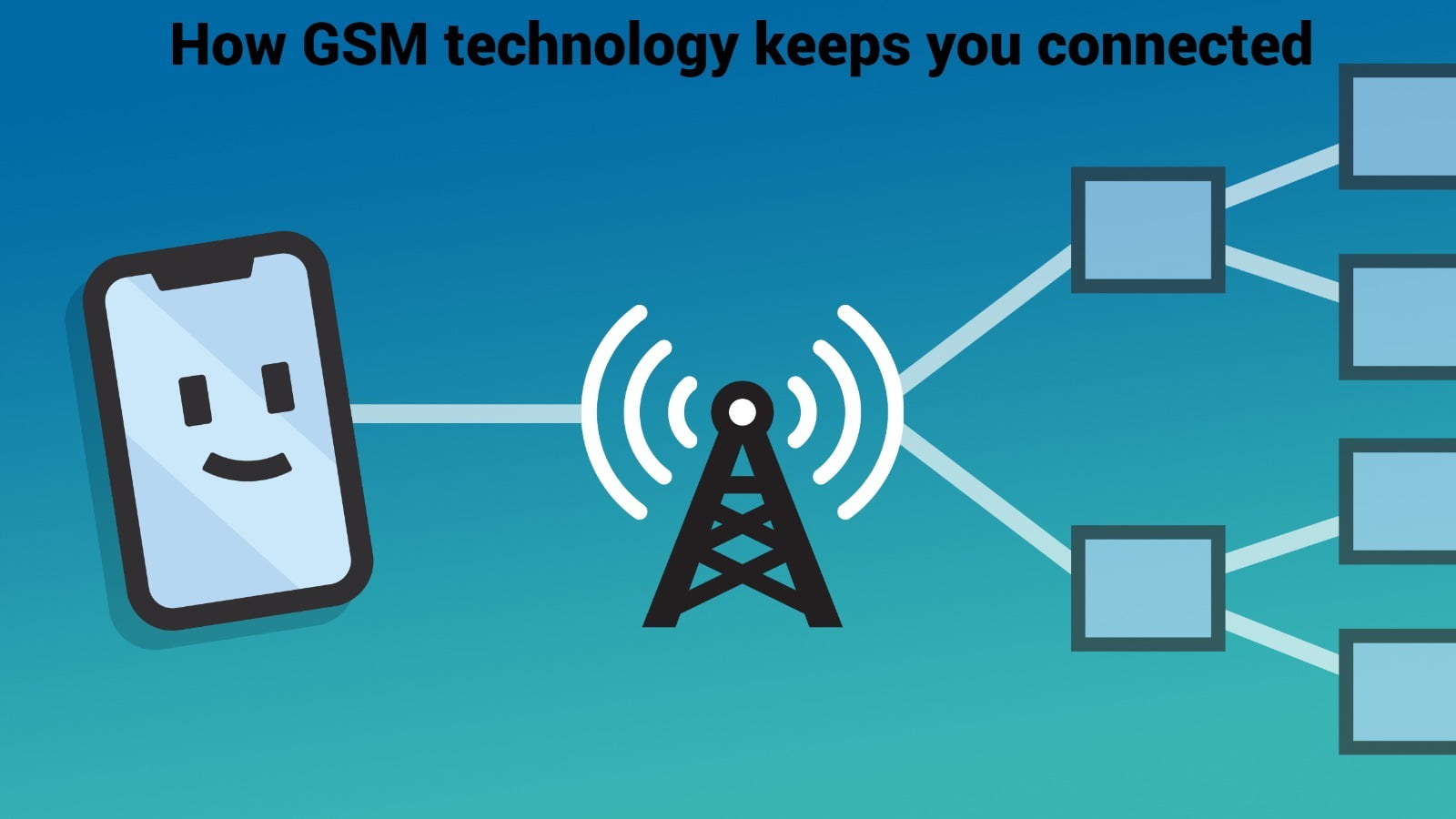
In 2023, we are all connected with our friends, relatives, our dear ones 24/7 through smartphones and smart devices which come with different applications and features. Now we can connect to the person who is living in the US from INDIA in just a matter of seconds. And we are even communicating with astronauts who are in outer space. What technology enables us to connect everywhere with everyone on this globe?
In this article we will explore the world of GSM or Global system for mobile communications- the wireless technology that enables us to stay connected no matter where we are.
What is GSM Technology?
GSM stands for Global System for Mobile Communication, it is a widely used mobile communication system.
It was first conceptualized at Bell Laboratories in 1970.
GSM operates as an open and digital cellular technology, enabling mobile voice and data services across various frequency bands such as 850MHz, 900MHz, 1800MHz, and 1900MHz.
The core of GSM technology is its digital system that employs the time division multiple access (TDMA) technique for communication.
GSM digitizes and compresses data before sending it through a channel with two streams of client data, each having its designated time slot.
The digital system allows for data rates ranging from 64 kbps to 120 Mbps.
There are five different cell sizes—macro, micro, pico, and umbrella cells—offering varying coverage areas based on the implementation environment.
The time division multiple access (TDMA) technique allocates different time slots to users sharing the same frequency, supporting efficient data transmission and voice communication with data rates ranging from 64kbps to 120Mbps.
GSM Technology Architecture
The Architecture of GSM Technology
The Main Elements in the GSM Architecture
Base-Station Subsystem (BSS)
Network and Switching Subsystem (NSS)
Operation and Support Subsystem (OSS)
The mobile station (MS)
BSS : BSS stands for Base Station Subsystem. BSS handles traffic and signaling between a mobile phone and the network switching subsystem. BSS having two components BTS (Base Transceiver Station) and BSC (Base Station Controller).
NSS : NSS stands for Network and Switching Subsystem. NSS is the core network of GSM, which carries out call and mobility management functions for mobile phones present in the network. NSS have different components like VLR(Visitor Location Register), HLR(Home Location Register) and EIR(Equipment Identity Register).
OSS : OSS stands for Operating Subsystem. OSS is a functional entity which the network operator monitors and controls the system. OMC is part of OSS. Purpose of OSS is to offer the customer cost-effective support for all GSM related maintenance services.
MS : MS stands for Mobile System. MS comprises user equipment and software needed for communication with a mobile network. Mobile Station (MS) = Mobile Equipment(ME) + Subscriber Identity Module (SIM), which is connected to tower and that tower connected with BTS through TRX. TRX is a transceiver which comprises a transmitter and receiver.
Features of GSM
Supports international roaming
Clear voice clarity
Ability to support multiple handheld devices.
Spectral / frequency efficiency
Low powered handheld devices.
Ease of accessing network
International ISDN compatibility.
Low service cost.
New features and services.
Short message service (SMS)
SIM phonebook management
Fixed dialing number (FDN)
Working of GSM Module
The GSM module eg. SIM800L from Simcom is connected to the microcontroller (MCU) like 8051, ESP32, Arduino or Nuvoton through a level shifter IC Max232 in the circuit.
When the GSM module mounted with a SIM card receives a digital command via SMS from any cell phone, it transmits that data to the MCU through serial communication.
During program execution, the GSM modem receives the command 'STOP' to trigger an output at the MCU, which is used to disable the switch.
The user sends the command based on an ALERT received through the GSM modem, which is a programmed message triggered only when the input is driven low.
The entire operation is displayed on a 16x2 LCD display.
The Circuit for GSM Module is shown below:
GSM Technology Applications
The Applications of GSM Technology are:
Asset Tracking: GSM-enabled devices can be used to track the location of assets, such as vehicles, equipment, and inventory. This information can be used to improve efficiency and optimize operations.
Environmental Monitoring: GSM-enabled sensors can be used to monitor environmental conditions, such as temperature, humidity, and air quality. This information can be used to improve safety and prevent damage to property.
Healthcare Monitoring: GSM-enabled devices can be used to monitor the health of patients, such as their heart rate, blood pressure, and glucose levels. This information can be used to improve patient care and prevent emergencies.
Fleet Management: GSM-enabled devices can be used to track the location and status of vehicles in a fleet. This information can be used to improve efficiency and optimize routing.
Smart Metering: GSM-enabled devices can be used to collect data from smart meters, such as water, gas, and electricity meters. This information can be used to improve accuracy and optimize energy consumption.
Conclusion
GSM has now grown widespread adoption, global roaming capabilities, and seamless transition to data services have transformed the way we communicate and access information. GSM technology has evolved with the emergence of 3G, 4G, and now 5G. And now its applications in various industries and the Internet of Things are growing day by day.
GSM technology is a versatile and reliable technology that keeps you connected in a variety of ways. If you are looking for a reliable and affordable way to stay connected, or building an IOT device incorporating GSM technology, reach out to us at Campus Component. At Campus Component we provide top GSM modules from brands such as SIMCOM and many more.

